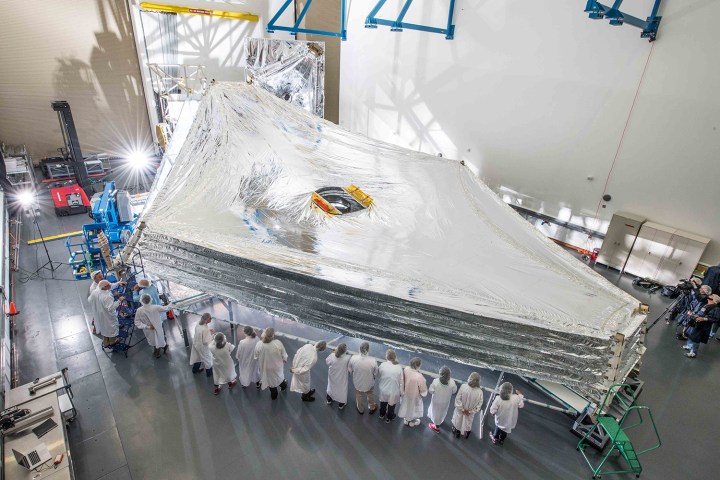Update January 2: The live coverage has been delayed until Monday, January 3 at the earliest. The time at which coverage will begin has not yet been confirmed by NASA, but you can keep an eye on the NASA TV page to see the latest updates for the coverage times.
The James Webb Space Telescope is continuing the complex process of unfolding its origami-like structure into its final deployed form while traveling through space on its way to its ultimate orbit around the sun. A major part of this process, in which the telescope tensions its sunshield, will be happening today and NASA will broadcast live coverage of the event. We’ve got the details on what to expect from this and how to watch along at home.
What to expect from the sunshield deployment

The process of getting the telescope from its launch configuration, folded up inside a rocket, to its full deployment, ready to start science operations, is a complex one. One of the most crucial and delicate parts of this operation is the deployment of the five-layered, tennis court-sized sunshield which will protect the telescope from the heat of the sun.
Over the past week, parts of the sunshield support structure have been deployed into place, culminating in the extension of the two mid-booms which stretched the sunshield across its full 47-foot width.
Now, the sunshield needs to be tensioned. Each of the five layers will be separated and stretched into its final shape, held taut with a space between each layer to allow heat to escape. This begins with the largest layer, which is the one closest to the sun, and works by using a total of 90 cables that are attached to various pulleys to pull the shield into place.
The full deployment is expected to take at least two days.
How to watch the sunshield deployment
Coverage of the sunshield deployment will begin on Sunday, January 2 at 2 p.m. ET (11 a.m. PT). NASA TV will show live broadcast coverage of the tensioning process, and once this is complete there will be a briefing with more information about James Webb and the deployment process.
To watch the broadcast, you can either head to NASA’s website or use the video player embedded near the top of this page.
In addition to coverage of the sunshield deployment, there will also be more coverage of further deployment processes next week. On Tuesday, January 4 there will be live coverage of the deployment of James Webb’s secondary mirror support structure, and on Friday, January 7 there will be live coverage of the unfolding on second of the primary mirror wings. The exact time for these broadcasts has not yet been confirmed, but you can keep an eye on the James Webb Space Telescope blog for more information as it becomes available.



